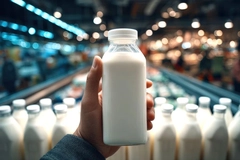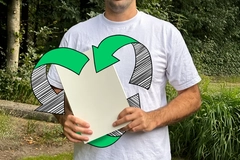Rabobank urges packaging industry to prepare for big changes amid incoming EU waste regulation

12 Oct 2023 --- The EU’s Packaging and Packaging Waste Regulation (PPWR) is set to trigger “significant changes” in the packaging industry and require producers to revise their product portfolios and sourcing processes to comply, according to a new report from Rabobank.
The PPWR, which is still in the proposal stage, aims to reduce packaging waste and support environmental sustainability. The regulation sets targets for recycling, reuse, refill and waste reduction, outlining design criteria for higher packaging recyclability, and mandates the establishment of DRS for beverage containers made of plastic and metal.
The report’s author, Regina Mestre, an analyst for food and agribusiness packaging at RaboResearch Food & Agribusiness, tells us that investment in infrastructure for waste collection and recycling will be necessary to meet the targets set by the regulation.
“The requirement for recyclability means that some packaging materials will have to change. This change means using materials that are easier to recycle, for example, moving toward monomaterial or changing the material choice entirely. We expect that these changes will be specific to the application and the material type,” she explains.
Planning ahead
The final text is expected to be presented in the spring of 2024, with countries including the regulation in their national laws in early 2025.
“Although the regulation is not yet final, and some of the targets are years or even decades away, packaging producers, recyclers, governments and anyone affected by the PPWR should start planning for the impacts that this regulation will have on their operations. These players would do well to identify strategies and alliances that will help them adapt to the changes to come in the European packaging landscape,” says Mestre. The PPWR will incentivize packaging businesses toward more circular solutions, like plastic monomaterial.
The PPWR will incentivize packaging businesses toward more circular solutions, like plastic monomaterial.
“It would also be positive for them to open conversations with their customers on these changes and work with them in identifying what steps to take to comply with the requirements.”
“Additionally, in the case of plastic packagers, it would be good to have more integration with recyclers and waste management companies to ensure access to recycled content.”
The regulation’s full impact on the packaging industry will depend on the outcome of the current discussions and the final requirements, including any additional accompanying guidelines.
“While the exact effect is not clear yet, we can anticipate some of the impacts,” adds Mestre.
This week, a pan-European coalition of over 100 organizations and businesses called for regulators to prioritize reuse systems and introduce clearer definitions for reusable packaging in the PPWR.
Material considerations
In light of the incoming PPWR rules, plastic packaging producers will need to adapt their sourcing strategies to ensure they have access to recycled content and, in some cases, modify their existing products to reach the targets set by the proposal, the report advises.
These changes might lead packaging producers and companies that use packaging to change their packaging choices, which can cause substitution between materials.
The impact of this potential substitution effect, according to Mestre, will depend on many factors, including the availability of materials, market dynamics, costs and the characteristics of the products that will use the packaging, which vary case by case. Image credit: Rabobank.
Image credit: Rabobank.
Recycling investment
Meanwhile, strong investments in waste collection and recycling infrastructure will be needed to match the requirements set by the regulation, particularly the recycling targets and the implementation of DRS.
“To achieve the waste reduction and recycling targets set for countries, collection systems and waste processing infrastructure need to be enhanced. For example, recycling capacity and the efficiency of existing capacity might need to be strengthened, and separate collection systems might need to be created,” Mestre tells Packaging Insights.
“The relevance of such infrastructure investments is twofold: On the one hand, they are needed to meet the regulation’s targets, and, on the other, they will help ensure the supply of recyclates needed to increase recycled content in plastic packaging, which is currently tight.” The PPWR will mandate DRS for beverage containers made of plastic and metal.
The PPWR will mandate DRS for beverage containers made of plastic and metal.
Market harmonization
Market harmonization will also be key to the PPWR’s success, according to the report. Consistency and clarity in the regulation’s requirements and their application are essential for ensuring a harmonized internal market in the EU and will minimize frictions and market barriers that could be detrimental to the objectives set by the new rules.
For the packaging industry, higher integration of the value chain will be beneficial for all players in achieving targets and smoothing interactions between one another.
“The next vote for the PPWR is planned for November, after discussions related to the amendments, meaning changes in the requirements are likely,” says Mestre.
“Nevertheless, the PPWR is coming close, and we anticipate it will change the packaging landscape in Europe, so any company affected by it should be ready for these changes.”
We recently explored the importance of decarbonization for the future of Europe’s paper packaging industry and the factors behind Smurfit Kappa and WestRock’s recent mega-merger with Rabobank analysts.
By Joshua Poole, with additional reporting from Natalie Schwertheim











